Search result125 results
-
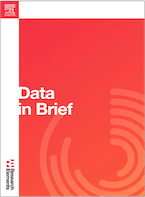
Using demographic, psychosocial, behavioural and safety-related factors to assess cyclists' behaviour: A comparative approach across 19 countries
Sergio Useche, Francisco Alonso, Aleksey Boyko, Polina Buyvol, Isaac Castañeda, Boris Cendales, Arturo Cervantes, Tomas Echiburu, Mireia Faus, Zuleide Feitosa, Cesareo Fernandez, Javier Gene-Morales, Bas de Geus, Jozef Gnap, Mohd K. Ibrahim, Kira H. Janstrup, Ignacio Lijarcio, Irina Makarova, Miroslava Mikusova, Mette Møller, Sylvain G. Ngueuteu-Fouaka, Steve O'Hern, Mauricio Orozco-Fontalvo, German Rojas, Ksenia Shubenkova, Felix Siebert, Jose Soto, Amanda Stephens, Yonggang Wang, Linus Zeuwts, Zahir H. Zulkipli, Rich McIlroy
(2024). ArticleData in Brief. No.54:110278
This Data in Brief (DiB) article presents the differences in cycling behaviors related to violations, errors, and positive behaviors by region. The study data were collected by means of a structured questionnaire applied to a full sample of 7,001 participants from 19 countries, distributed over 5 continents. This paper proposes descriptive statistics, as well as common statistical tests. The aim is to enable authors to make their own analyses, not to provide precise interpretations. For further information about the macro project supporting the collection of these data, it is advised to refer to the paper titled “Cross-culturally approaching the cycling behavior questionnaire (CBQ):...
This Data in Brief (DiB) article presents the differences in cycling behaviors related to violations, errors, and positive behaviors by region. The study data were collected by means of a structured questionnaire applied to a full sample of 7,001 participants from 19 countries, distributed over 5 continents. This paper proposes descriptive statistics, as well as common statistical tests. The aim is to enable authors to make their own analyses, not to provide precise interpretations. For further information about the macro project supporting the collection of these data, it is advised to refer to the paper titled “Cross-culturally approaching the cycling behavior questionnaire (CBQ): Evidence from 19 countries”, published in Transportation Research Part F: Traffic Psychology and Behavior.
Read more Hide DOI: 10.1016/j.dib.2024.110278ISSN: 2352-3409 -
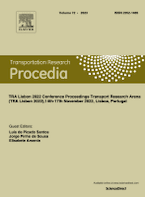
Cross-culturally approaching cycling safety from a behavioural perspective: a study in 19 countries
Sergio A. Useche, Francisco Alonso, Aleksey Boyko, Polina Buyvol, Isaac Castañeda, Boris Cendales, Arturo Cervantes, Tomas Echiburu, Mireia Faus, Zuleide Feitosa, Jozef Gnap, Mohd K. Ibrahim, Kira H. Janstrup, Ignacio Lijarcio, Irina Makarova, Cristina Marin, Rich McIlroy, Miroslava Mikusova, Mette Møller, Luis Montoro, Sylvain G. Ngueuteu-Fouaka, Steve O'Hern, Mauricio Orozco-Fontalvo, Ksenia Shubenkova, Jose Soto, Amanda Stephens, Yonggang Wang, Ellias Willberg, Phillip Wintersberger, Linus Zeuwts, Zahir H. Zulkipli, Felix Siebert
(2023). ArticleTransportation Research Procedia. No.72:4143-4150
While promoting urban cycling has shown to represent several benefits for public health, risky behaviours might endanger cycling safety outcomes and discourage people from shifting to active transportation. Therefore, examining the relationships among riding behaviour, safety, and country-based figures seems valuable for promoting a safer and sustainable development of urban cycling worldwide. For this study, 7,001 urban cyclists from 19 countries provided data on their mobility patterns, cycling behaviours and safety outcomes. The results show that positive behaviours are overall more prevalent than risky ones. However, behavioural patterns largely vary depending on riders’ demographics...
While promoting urban cycling has shown to represent several benefits for public health, risky behaviours might endanger cycling safety outcomes and discourage people from shifting to active transportation. Therefore, examining the relationships among riding behaviour, safety, and country-based figures seems valuable for promoting a safer and sustainable development of urban cycling worldwide. For this study, 7,001 urban cyclists from 19 countries provided data on their mobility patterns, cycling behaviours and safety outcomes. The results show that positive behaviours are overall more prevalent than risky ones. However, behavioural patterns largely vary depending on riders’ demographics and country-based indexes. It supports the idea that cycling behaviour remains a key contributor to cycling outcomes, as well as the need to fill many gaps endangering riding safety across many countries.
Read more Hide DOI: 10.1016/j.trpro.2023.11.361ISSN: 2352-1465 -
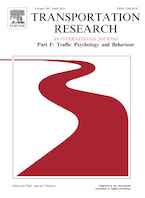
Cross-culturally approaching the cycling behaviour questionnaire (CBQ): Evidence from 19 countries
Sergio Useche, Francisco Alonso, Aleksey Boyko, Polina Buyvol, Isaac Castañeda, Boris Cendales, et all.
(2022). ArticleTransportation Research Part F. No.91:386-400
Given different advances in applied literature, risky and positive behaviours keep gaining ground as key contributors for riding safety outcomes. In this regard, the Cycling Behaviour Questionnaire (CBQ) represents one of the tools available to assess the core dimensions of cycling behaviour and their relationship with road safety outcomes from a behavioural perspective. Nevertheless, it has never been psychometrically approached through a cross-cultural perspective. Therefore, this study aimed to perform the cross-cultural validation of the CBQ, examining its psychometric properties, reliability indexes, validity insights and descriptive scores in 19 countries distributed across five...
Given different advances in applied literature, risky and positive behaviours keep gaining ground as key contributors for riding safety outcomes. In this regard, the Cycling Behaviour Questionnaire (CBQ) represents one of the tools available to assess the core dimensions of cycling behaviour and their relationship with road safety outcomes from a behavioural perspective. Nevertheless, it has never been psychometrically approached through a cross-cultural perspective. Therefore, this study aimed to perform the cross-cultural validation of the CBQ, examining its psychometric properties, reliability indexes, validity insights and descriptive scores in 19 countries distributed across five regions: Europe, America, Asia, Africa, and Oceania. For this purpose, it was used the data retrieved from a full sample of 7,001 urban cyclists responding to a large-scale electronic survey. Participants had a mean age of M = 36.15 (SD = 14.71), ranging between 16 and 83 years. The results of this large-scale study empirically support the assumption that the 29-item version of the CBQ has a fair dimensional structure and item composition, good internal consistency, reliability indexes, and an interesting set of validity insights. Among these results, there can be highlighted that: (i) Structurally speaking, the questionnaire works better under a three-factor dimensionality, keeping all its 29 items, whose factor loadings are >0.400 in all cases; (ii) The CBQ shows greater reliability indexes than in previous applications using smaller samples, with good Cronbach’s alphas [0.768 - 0.915], McDonald’s omegas [0.770 - 0.913] and Composite Reliability Indexes [981 - 0.994]; and (iii) Robust tests comparing riding behaviours of riders with different levels of risk perception and crash involvement support the concurrent validity of the Cycling Behaviour Questionnaire. These outcomes endorse the usefulness of the CBQ to assess both risky and positive riding behaviours of cyclists in different countries, contributing to assess and improve cycling safety from the human factors approach.
Read more Hide DOI: 10.1016/j.trf.2022.10.025ISSN: 1873-5517 -

First Iberoamerican Congress on Traffic Psychology and Road Safety
Andrea Serge, Francisco Alonso, Luis Montoro
(2022). Participació en congressosAndrea Serge, Francisco Alonso and Luis Montoro, INTRAS researchers, presented the paper “Leccidentes: Describing Traffic Accidents and Accidents during Mobility” at the First Ibero-American Congress of Traffic Psychology and Road Safety held in Bogota (Colombia) from June 2 to 4, 2022. This meeting aims to disseminate and promote scientific research and the exchange of social experiences around the lines of: Law applied to traffic, road infrastructure, traffic psychology, public policies in mobility and road victimology and is organized by the Laboratory of Legal Psychology of the National University of Colombia.
-

Essential…but also vulnerable? Work intensification, effort/reward imbalance, fatigue and psychological health of Spanish cargo drivers during the COVID-19 pandemic
Luis Montoro, Boris Cendales, Francisco Alonso, Adela Gonzalez-Marin, Ignacio Lijarcio, Javier Llamazares, Sergio Useche
(2022). ArticlePeerJ. No.10:e13050
Objective This study investigates the combined effect of the Effort/Reward Imbalance (ERI) model of stress and work intensification within the context of the COVID-19 pandemic on the psychological health (general and work-related fatigue, and psychological strain) of cargo drivers, one of the most demanded workforces during the first year of this pandemic. Methods For this cross-sectional research, the data provided by n = 1,013 professional drivers from the different 17 autonomous communities (regions) of Spain were analyzed. Participants answered a questionnaire composed of the short version of the Effort Reward Imbalance (ERI) questionnaire, a Work Intensification Scale (WIS) designed...
Objective This study investigates the combined effect of the Effort/Reward Imbalance (ERI) model of stress and work intensification within the context of the COVID-19 pandemic on the psychological health (general and work-related fatigue, and psychological strain) of cargo drivers, one of the most demanded workforces during the first year of this pandemic. Methods For this cross-sectional research, the data provided by n = 1,013 professional drivers from the different 17 autonomous communities (regions) of Spain were analyzed. Participants answered a questionnaire composed of the short version of the Effort Reward Imbalance (ERI) questionnaire, a Work Intensification Scale (WIS) designed for this study, the fatigue subscale of the Checklist Individual Strength (CIS), the Need for Recovery after Work Scale (NFR), and the General Health Questionnaire (GHQ). Results Hierarchical regression analyses show that both (ERI and work intensification) models significantly predict driver’s fatigue and psychological strain. The effect of work intensification exists above and beyond the effect of effort/reward imbalance, which has been previously related to the safety performance of cargo drivers. Conclusions These findings suggest that the ERI and work intensification models can be complementarily used, especially in scenarios introducing substantial changes in the work environment, such as the COVID-19 crisis. Also, the results of this study support the need to intervene in the working conditions of professional drivers in order to improve their psychological health and well-being during both pandemic and post-pandemic times, as crisis-related management interventions are necessary to promote health and safety in professional drivers in potentially similar contexts in the future.
Read more Hide DOI: 10.7717/peerj.13050ISSN: 2167-8359 -
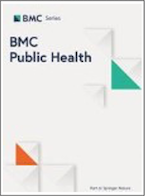
Measuring job stress in transportation workers: psychometric properties, convergent validity and reliability of the ERI and JCQ among professional drivers
Sergio Useche, Francisco Alonso, Boris Cendales, Luis Montoro, Javier Llamazares
(2021). ArticleBMC Public Health. No.21:1594
Background The accumulated evidence has shown how professional drivers are, in psychosocial terms, among the most vulnerable workforces, and how their crashes (some of them preceded by stressful working conditions) constitute both an occupational and public health concern. However, there is a clear lack of validated tools for measuring stress and other key hazardous issues affecting transport workers, and most of the existing ones, frequently generic, do not fully consider the specific features that properly describe the work environment of professional driving. This study assessed the psychometric properties, convergent validity and consistency of two measures used for researching...
Background The accumulated evidence has shown how professional drivers are, in psychosocial terms, among the most vulnerable workforces, and how their crashes (some of them preceded by stressful working conditions) constitute both an occupational and public health concern. However, there is a clear lack of validated tools for measuring stress and other key hazardous issues affecting transport workers, and most of the existing ones, frequently generic, do not fully consider the specific features that properly describe the work environment of professional driving. This study assessed the psychometric properties, convergent validity and consistency of two measures used for researching occupational stress among professional drivers: the Siegrist’s ERI (Effort-Reward Imbalance Inventory) and Karasek’s JCQ (Job Content Questionnaire). Methods We examined the data collected from 726 Spanish professional drivers. Analyses were performed using Structural Equation Models, thus obtaining basic psychometric properties of both measures and an optimized structure for the instruments, in addition to testing their convergent validity. Results The results suggest that the abbreviated versions of ERI (10 items) and JCQ (20 items) have clear dimensional structures, high factorial weights, internal consistency and an improved fit to the task’s dynamics and hazards, commonly faced by of professional drivers; a short set of items with low psychometrical adjustment was excluded, and the root structure of the questionnaires was kept. Conclusions This study supports the value and reliability of ERI-10 and JCQ-20 for measuring job stress among professional drivers. Also, there is a high consistency between both measures of stress, even though they belong to different theoretical conceptions of the phenomenon. In practical settings, these instruments can be useful for occupational researchers and practitioners studying stress-related issues from the perspective of human factors.
Read more Hide DOI: 10.1186/s12889-021-11575-1ISSN: 1471-2458 -
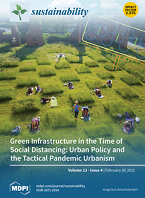
“Not as safe as I believed”: Differences in perceived and self-reported cycling behavior between riders and non-riders
Sergio Useche, Javier Gené-Morales, Félix Siebert, Francisco Alonso, Luis Montoro
(2021). ArticleSustainability. No.13(4), 1614
Cycling behavior remains a key issue for explaining several traffic causalities occurring every day. However, recent studies have shown how the assessment of the own safety-related behaviors on the road may substantially differ from how third parties assess them. Thus, the aim of this study was to evaluate the differences between cyclists’ self-reported behavior and the proxyreported behavior that other (non-cyclist) road users perceive from bike riders. For this purpose, this study used data from two samples: (i) 1064 cyclists (M = 32.83 years) answering the Cycling Behavior Questionnaire—CBQ, and (ii) 1070 non-cyclists (M = 30.83 years) answering an adapted version of the CBQ for external...
Cycling behavior remains a key issue for explaining several traffic causalities occurring every day. However, recent studies have shown how the assessment of the own safety-related behaviors on the road may substantially differ from how third parties assess them. Thus, the aim of this study was to evaluate the differences between cyclists’ self-reported behavior and the proxyreported behavior that other (non-cyclist) road users perceive from bike riders. For this purpose, this study used data from two samples: (i) 1064 cyclists (M = 32.83 years) answering the Cycling Behavior Questionnaire—CBQ, and (ii) 1070 non-cyclists (M = 30.83 years) answering an adapted version of the CBQ for external raters—ECBQ. The results show how the self-reported and proxy-reported behaviors of cyclists greatly differ in terms of all behavioral factors composing the CBQ model, i.e., traffic violations, riding errors, and positive behaviors. Also, external raters (non-cyclists) are those targeting significantly riskier behaviors than those self-reported by cyclists. These discrepancies between perceived behaviors may give rise to conflicting viewpoints on the interaction between bicycle riders and other road users. Therefore, this study underscores the importance of behavioral awareness, providing highlights for future studies on the behavioral interaction between cyclists and other road users. Results can be used to improve the road safety of all road users by giving indications on self-and proxy-perceived safety-related behaviors and visibility of protective riding habits.
Read more Hide DOI: 10.3390/su13041614 -
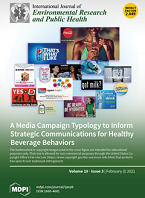
Socioeconomic Status, Health and Life-Style Settings as Psychosocial Risk Factors for Road Crashes in Young People: Assessing the Colombian Case
Andrea Serge, Johana Quiroz, Francisco Alonso, Luis Montoro
(2021). ArticleInternational Journal of Environmental Research and Public Health. No.18(3), 886
The social determinants of health influence both psychosocial risks and protective factors, especially in high-demanding contexts, such as the mobility of drivers and non-drivers. Recent evidence suggests that exploring socioeconomic status (SES), health and lifestyle-related factors might contribute to a better understanding of road traffic crashes (RTCs). Thus, the aim of this study was to construct indices for the assessment of crash rates and mobility patterns among young Colombians who live in the central region of the country. The specific objectives were developing SES, health and lifestyle indices, and assessing the self-reported RTCs and mobility features depending on these...
The social determinants of health influence both psychosocial risks and protective factors, especially in high-demanding contexts, such as the mobility of drivers and non-drivers. Recent evidence suggests that exploring socioeconomic status (SES), health and lifestyle-related factors might contribute to a better understanding of road traffic crashes (RTCs). Thus, the aim of this study was to construct indices for the assessment of crash rates and mobility patterns among young Colombians who live in the central region of the country. The specific objectives were developing SES, health and lifestyle indices, and assessing the self-reported RTCs and mobility features depending on these indices. A sample of 561 subjects participated in this cross-sectional study. Through a reduction approach of Principal Component Analysis (PCA), three indices were constructed. Mean and frequency differences were contrasted for the self-reported mobility, crash rates, age, and gender. As a result, SES, health and lifestyle indices explained between 56.3–67.9% of the total variance. Drivers and pedestrians who suffered crashes had higher SES. A healthier lifestyle is associated with cycling, but also with suffering more bike crashes; drivers and those reporting traffic crashes have shown greater psychosocial and lifestyle-related risk factors. Regarding gender differences, men are more likely to engage in road activities, as well as to suffer more RTCs. On the other hand, women present lower healthy lifestyle-related indices and a less active implication in mobility. Protective factors such as a high SES and a healthier lifestyle are associated with RTCs suffered by young Colombian road users. Given the differences found in this regard, a gender perspective for understanding RTCs and mobility is highly suggestible, considering that socio-economic gaps seem to differentially affect mobility and crash-related patterns
Read more Hide DOI: 10.3390/ijerph18030886ISSN: 1660-4601 -

Visual health and road safety: It’s time for action!: The implication of vision in traffic accidents and the importance of political action to treat this risk factor
Luis Montoro, Ignacio Lijarcio, Sergio Useche, Cristina Catalá, Javier LLamazares
(2021). InformesThe document summarises the main findings on the importance of vision in road safety, with the aim of continuing to reduce road accidents in Spain and the rest of the world caused by poor visual health. The conclusions obtained indicate that visual health is an important factor to be taken into account in road safety and that it requires the continuous development of research into night and daytime driving, the promotion of visual health in drivers, as well as an improvement in visual exploration protocols and the creation of actions to raise awareness among all citizens. The commitment to road safety and the development of initiatives and research of this nature will help to achieve the...
The document summarises the main findings on the importance of vision in road safety, with the aim of continuing to reduce road accidents in Spain and the rest of the world caused by poor visual health. The conclusions obtained indicate that visual health is an important factor to be taken into account in road safety and that it requires the continuous development of research into night and daytime driving, the promotion of visual health in drivers, as well as an improvement in visual exploration protocols and the creation of actions to raise awareness among all citizens. The commitment to road safety and the development of initiatives and research of this nature will help to achieve the goal set out in this new decade of action for road safety declared in August 2020 by the United Nations General Assembly.
Read more Hide -
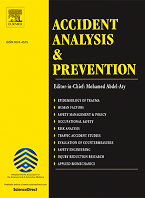
Are Latin American cycling commuters “at risk”? A comparative study on cycling patterns, behaviors, and crashes with non-commuter cyclists
Sergio Useche, Cristina Esteban, Francisco Alonso, Luis Montoro
(2020). ArticleAccident Analysis and Prevention. No.150:105915
Introduction As part of the transformation of urban transportation dynamics, commuter cycling has acquired a high relevance as an alternative mode of transport in different countries, and Latin America seems to be one of the main focus of this worldwide “revolution”. However, the high rates of crashes and injuries suffered by commuters have become a relevant issue in the field of road safety, especially in emerging regions with low cycling tradition, where social and infrastructural gaps may endanger the cyclists’ safety. Objectives This study had two objectives. First, to compare key safe cycling-related variables between cycling commuters and non-commuters; and second, to...
Introduction As part of the transformation of urban transportation dynamics, commuter cycling has acquired a high relevance as an alternative mode of transport in different countries, and Latin America seems to be one of the main focus of this worldwide “revolution”. However, the high rates of crashes and injuries suffered by commuters have become a relevant issue in the field of road safety, especially in emerging regions with low cycling tradition, where social and infrastructural gaps may endanger the cyclists’ safety. Objectives This study had two objectives. First, to compare key safe cycling-related variables between cycling commuters and non-commuters; and second, to differentially asses the effect of individual and cycling-related variables on their self-reported crash rates. Method: For this cross-sectional research, the data provided by 577 Latin American urban cyclists from three countries (Argentina, Colombia and Mexico) with a mean age of 32.7 years was used. They answered a questionnaire on cycling habits, risk perception, rule knowledge, cycling behaviors and riding crashes. Results The outcomes of this study showed that, despite having a higher risk perception, cycling commuters perform deliberate risky cycling behaviors (traffic violations) more frequently, and they suffer more crashes; cycling commuters report higher rates of psychological distress, and a lower degree of rule knowledge and protective behaviors than non-commuters. Furthermore, structural similarities and differences in the explanation of cycling crashes were found across commuters and non-commuters. Conclusion The results of this study suggest that non-commuters, whose purposes for cycling are more aimed at leisure and occasional trips, perform less risky behaviors but suffer more cycling distractions, whereas commuters are comparatively more exposed to behavioral-based safety risks, and suffer more frequent crashes. Since recent evidence forecasts that urban cycling will keep growing in Latin American cities, it is necessary to implement policies and educational/training improvements that may enhance the safety and health of cyclists in these countries.
Read more Hide DOI: 10.1016/j.aap.2020.105915ISSN: 0001-4575









